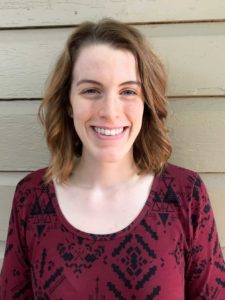Thinking about switching to an SLP school based setting?
If you answered yes to that question, then you might be in for an experience similar to the one I had this past August of 2018. I came to work at Bilinguistics after completing my clinical fellowship in a bilingual pediatric therapy clinic, and as a result I was confident that my transition into a new role as a hybridized clinic and school-based clinician would be a relatively smooth one. I looked back on my graduate school practicum in the schools. It had been a positive experience, and apart from managing group therapy and a potentially intimidating caseload, the differences between that setting and the clinic seemed superficial and limited mainly to documentation style. “It’s still pediatrics”, I thought to myself, “How different can it be?” As it turns out, the difference is stark.
Even settings with comparable populations are drastically different.
Although the substance of the therapy with a pediatric population is generally the same, the day to day job experience, for me, is like a different planet in a school. Scheduling in a clinic is streamlined. Appointments are at mutually agreed upon times, caseloads change only when there is space to accommodate more people into the schedule, and the parents are always there to sign documentation when necessary.
As someone inexperienced in the school setting, scheduling there felt, and continues to feel, like a chaotic vortex of appointments. Based on my experience, about half of my time in the schools is devoted to direct therapy. My role and responsibilities also include calling parents and sending home paperwork, talking to teachers and administrators to coordinate services, organizing IEP meetings, and writing reports. I’ve learned that it takes a good deal of skill to navigate that maze efficiently, and that graduate school greatly sheltered me from the true scope of the school setting workload. That’s not to say that there isn’t a healthy dose of documentation in the clinic, but the scope of the documentation and day-to day job tasks certainly feels narrower and more directly focused on the therapy. Kudos to all the school-based SLP goddesses (and four gods) out there! Your ability to play scheduling Tetris and to juggle therapy time with documentation and meetings deserves a lot of praise and recognition. Here’s to our SLPs who serve in the school setting.
Considerations for clinicians who are eager to switch settings:
- Be informed. Do what you can to learn the details of the day-to-day role in your new prospective setting. Let’s be honest, the paper-pushing part of therapy isn’t going anywhere, and it’s worth figuring out what you want that to look like in addition to deciding on a preferred patient population. Do you prefer to navigate IEPs and special education regulations, or would you rather work with insurance authorization? Maybe you work in a SNF and you know Medicare regulations inside and out. Would moving to pediatrics and learning the ropes of IEPs be a bigger shift than you’re willing to make? The learning curve is worth navigating if a new setting seems a genuinely good fit, but it’s nothing to shrug at. Talk to people in your setting of interest and ask them how their days look in terms of both therapy and other job responsibilities.
- Prioritize your needs. Ask yourself what lifestyle factors you care about, and prioritize that. Do you want to have the same schedule as your kids and work in a school? Are you okay with being confined to the school year calendar? Is working after school hours in a clinic going to work for you? Are you okay with operating on a productivity quota and working holidays in the medical settings? If you can (sometimes this info is hard to find), take a look at the daily rate of pay for the settings you are comparing. You might find that the pay is surprisingly similar OR surprisingly different from where you currently work depending on which settings you compare and where you live. It may not be a direct part of the therapy, but there are distinct pros and cons to each setting. There’s no right answer as to which setting is the best, and figuring out what will and won’t be a good fit is a very personal choice that deserves some research and soul searching. Put time into this, you deserve it!
- Be prepared to learn and grow. Changing settings can be a great fit and a worthwhile transition, but no matter what setting you’re moving to it will almost certainly come with a substantial learning curve. Being prepared to put in the extra work like a clinical fellow in order to get up to speed comes with the territory. If re-living the imposter syndrome and stress of those years is a no-go, changing settings might not be the right choice. If you are up for climbing that worthwhile hill, it can be a meaningful decision!
If you are looking for more information, this link provides information for School-Based SLPs from ASHA.

Victoria’s enthusiasm for foreign language began in high school, when she began studying Spanish and realized that bilingualism is a super power for interacting with a multitude of new people and cultures. Her passion for speaking and learning Spanish continued throughout her undergraduate and graduate careers. Throughout her time at the University of Oklahoma, she continued to hone her language skills and focus on bilingualism, second language acquisition, and therapy with culturally and linguistically diverse populations. In her free time, Victoria enjoys spending time outdoors, listening to live music, and continuing her quest to find the best taco shop in town. You can email Victoria at victoria.greenwood@bilinguistics.com.





Your blogs on this topic have been extremely helpful. I especially appreciate the bigger picture of direct therapy half of the time and the scheduling vortex image. I also bought one of your books in grad school. Thanks for sharing your talents so well. From this blog I now feel added value (after my grad school budget concern for cost of book ; ) Thank you so very much!
We are glad the blog posts are serving you well!